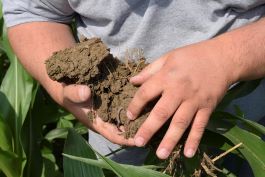Photo Credit: rawpixel | US Department of Agriculture
There’s been more and more talk about nutrient or fertilizer stratification in soils. Maybe you’ve had articles come across the news feed on your phone, or you’ve seen an agronomist you follow online mention it. And there’s a chance you’re here because you’re wondering what it is and if you should be worried about it.
So, let’s talk about nutrient stratification in soils. What it is, what causes it, and whether you should be concerned about it.
What is nutrient stratification?
Simply put, nutrient stratification is when nutrient distribution within the soil profile is uneven. Most commonly, there are bands of higher nutrient concentrations of nutrients (especially phosphorus and potassium, which are immobile) closer to the soil surface.
In other words, some soils have a heavy concentration of certain nutrients closer to the surface instead of a good mix of nutrients.
Nutrients like nitrogen and sulfur, which are highly mobile in the soil, are easily found in the entire profile because they move with air and water. Yet immobile nutrients like phosphorus and potassium generally stay where they were applied or mixed in when tilled, creating a defined layer or band of nutrients.
Think of it like mixing gravy into your mashed potatoes at Thanksgiving dinner. But you only incorporate the gravy into the top of the potatoes. The first few bites are great—there’s plenty of gravy. However, the further you get down into the potatoes, they’re kinda dry, and there isn’t much of the good stuff (e.g., the gravy) anymore.
What causes nutrient stratification?
- Fertilizer placement
- Fertilizer application method
- Soil moisture levels
- Type of tillage
- Surface crop residue
- Nutrient leaching from crop resides
Initial concerns from the discovery of soil stratification
At first, farm managers and agronomists were concerned that stratification negatively impacted plant growth. Which is completely understandable.
Theoretically, these layers of immobile nutrients can sit above the root zone. So crops can’t access the fertilizer components essential for growth and a productive yield.
One would think mixing nutrients evenly through the soil profile is best. Further investigation of stratification has shown a very different perspective.
The truth regarding stratification in different tillage systems
Much of the talk about fertilizer stratification focuses on no-till or reduced-tillage farming systems. This, truthfully, is where stratification came to light as researchers started looking in-depth at these types of farming and their impact on plant growth, soil health, etc.
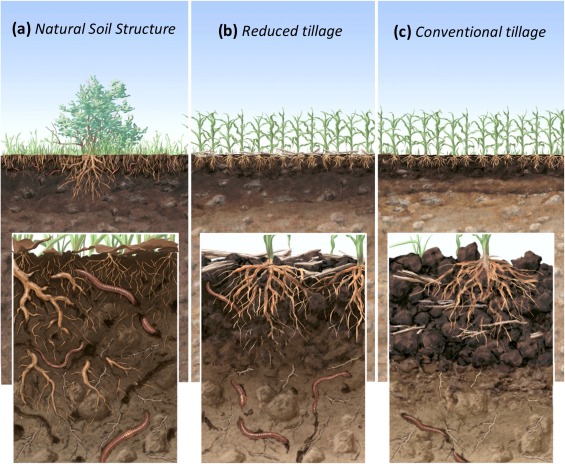 Photo Credit: Or, Keller, and Schlesinger | CC BY 4.0
Photo Credit: Or, Keller, and Schlesinger | CC BY 4.0
For a while, there was a push towards deeper fertilizer placement to keep this stratification from occurring so close to the soil surface. Putting the fertilizer down in the soil would put it closer to the roots.
The interesting part, though, is as scientists dug deeper, they found that nutrient stratification occurs naturally across all types of soils, whether cultivated or not, and if cultivated, regardless of the tillage method used. And research has shown it isn’t the problem people initially thought.
So, soil stratification is normal. It doesn’t matter the soil, if it’s cultivated, or how it’s worked. When examined, you can see distinct nutrient layers across all profiles. An even closer look shows, in most cases, nutrient movement over time or adequate plant uptake and utilization
Stratification in undisturbed soils
In undisturbed soils like prairies and woodlands, higher concentrations of nutrients are naturally found close to the surface because of plant residue accumulation. It makes sense. As this biomass decomposes, the nutrients are released right at the surface where the plant matter is broken down.
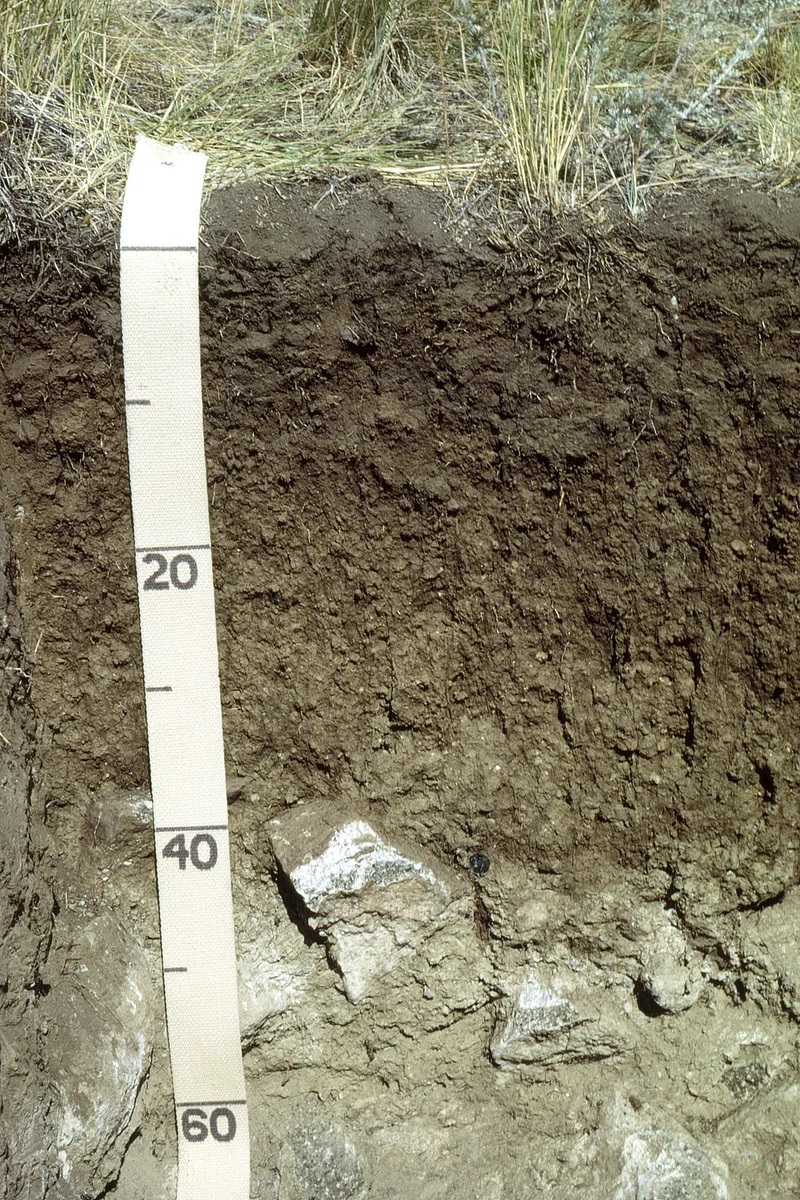 Photo Credit: rawpixel | US Department of Agriculture
Photo Credit: rawpixel | US Department of Agriculture
However, these soils have a great soil structure and biological activity because they are so high in organic matter. Over time, rain, melting snow, and organisms such as earthworms slowly move these nutrients deeper into the soil.
Stratification in no-till or minimal-till systems
In conventional soils converted to no-till, poor soil structure and lower soil organic matter (SOM) can initially lead to compacted soils. The soil compaction prevents many soil nutrients from easily moving downward, so they tend to accumulate at the surface.
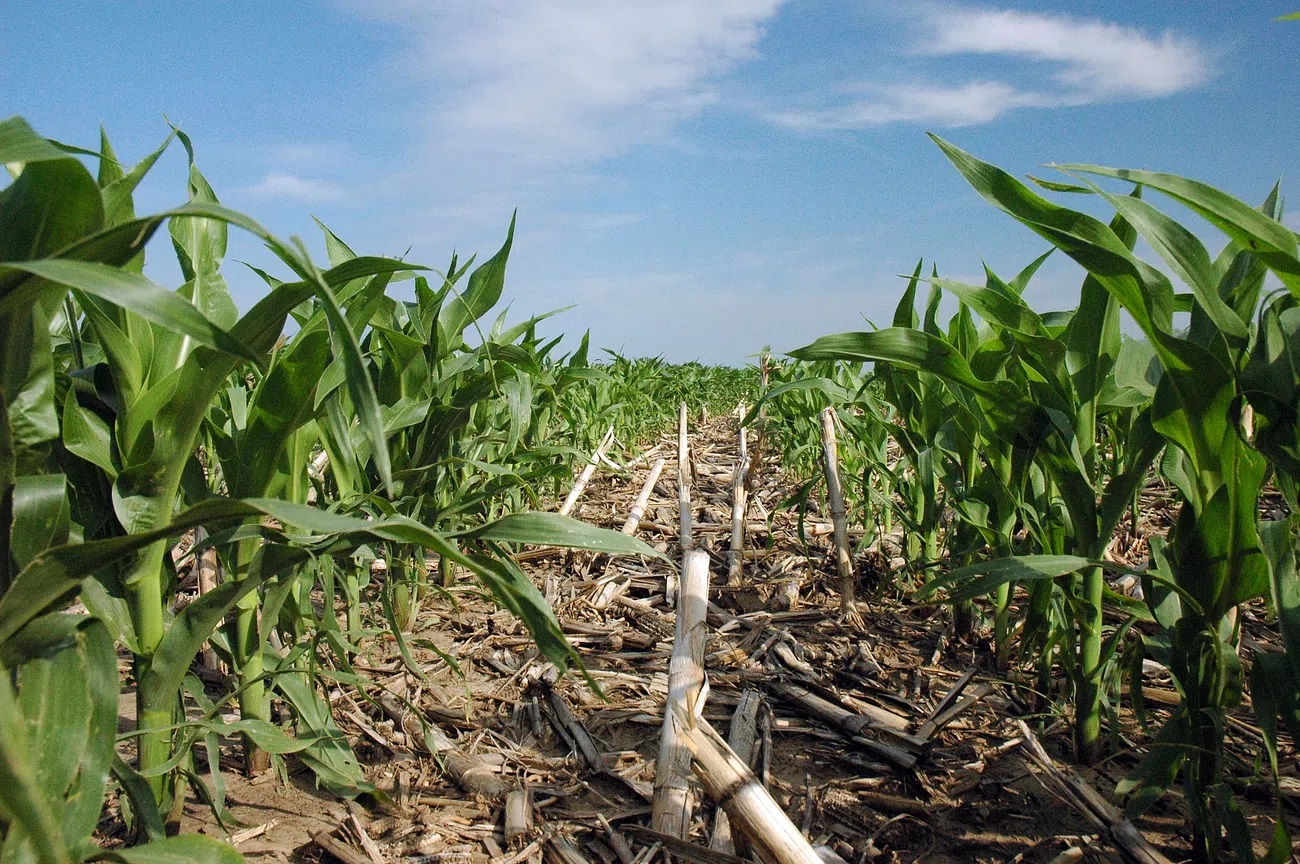 Photo Credit: rawpixel | US Department of Agriculture
Photo Credit: rawpixel | US Department of Agriculture
Broadcast applications of immobile P and K also increase the nutrient concentration near the soil surface.
As time passes, soil health improves, and you see better structure and increased biological activity that help move nutrients through the soil. The increased ground cover also improves soil moisture in the uppermost layers. In turn, soil compaction decreases, and nutrients are moved down through the soil.
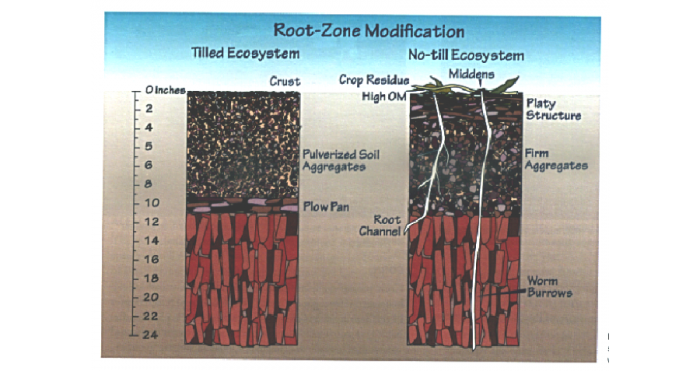 Photo Credit: SERC | S. W. Duiker and J.C. Myers. 2005 Penn State University
Photo Credit: SERC | S. W. Duiker and J.C. Myers. 2005 Penn State University
There’s also more to the no-till story.
Researcher Fernando Selles at Agriculture and Agri-Food Canada at Swift Current found that after 12 years of continuous no-till wheat, plant available P was concentrated in the surface two-inch layer. Soybeans can send roots down two or three feet, but in a typical field, most of the root mass is within the 6 to 12”. Upon first thought, you can see the concern about stratification.
All of that P should be sitting above the roots.
Interestingly, in no-till systems, the residue left on the soil surface increases soil moisture levels, and you see root growth much higher up in the soil profile. According to Adrian Johnston, a director with the International Plant Nutrition Institute in Saskatoon, Saskatchewan, “the accumulation of surface crop residues does an excellent job of maintaining higher soil moisture levels at the surface. This will keep roots active and able to access these accumulated nutrients.”
In fact, studies have found that no-tilled crops tend to have greater uptake of surface-applied fertilizer than conventionally tilled crops.
According to a paper written by University of Kentucky soil scientist John Grove, Raymond Ward of Ward Labs, and University of Maryland soil scientist Ray Weil, research conducted in 1980-81 showed substantially more potassium stratification in a long-term no-till corn plot, potassium uptake of the no-till corn was higher than corn grown using conventional tillage.
- The top 2” of the no-till plots had an average of 170 ppm potassium compared to 132 ppm in the moldboard-plowed plot. Potassium uptake of the no-till corn was shown to be 130” of the plowed.
Stratification in conventional tillage
It’s probably safe to assume many people think conventional tillage systems would have the least stratification. Because tillage mixes the soil profile every time the ground is plowed and combines the naturally occurring layers of nutrients.
It’s not true. In many cases, conventional tillage systems have as much stratification, if not more, than no-till systems.
Deep tillage—typically plowing 6-8 inches down—generally moves surface applied nutrients about 3-4 inches down into the soil or roughly 50%. It still creates a somewhat concentrated layer, even though it isn’t as shallow as no-till.
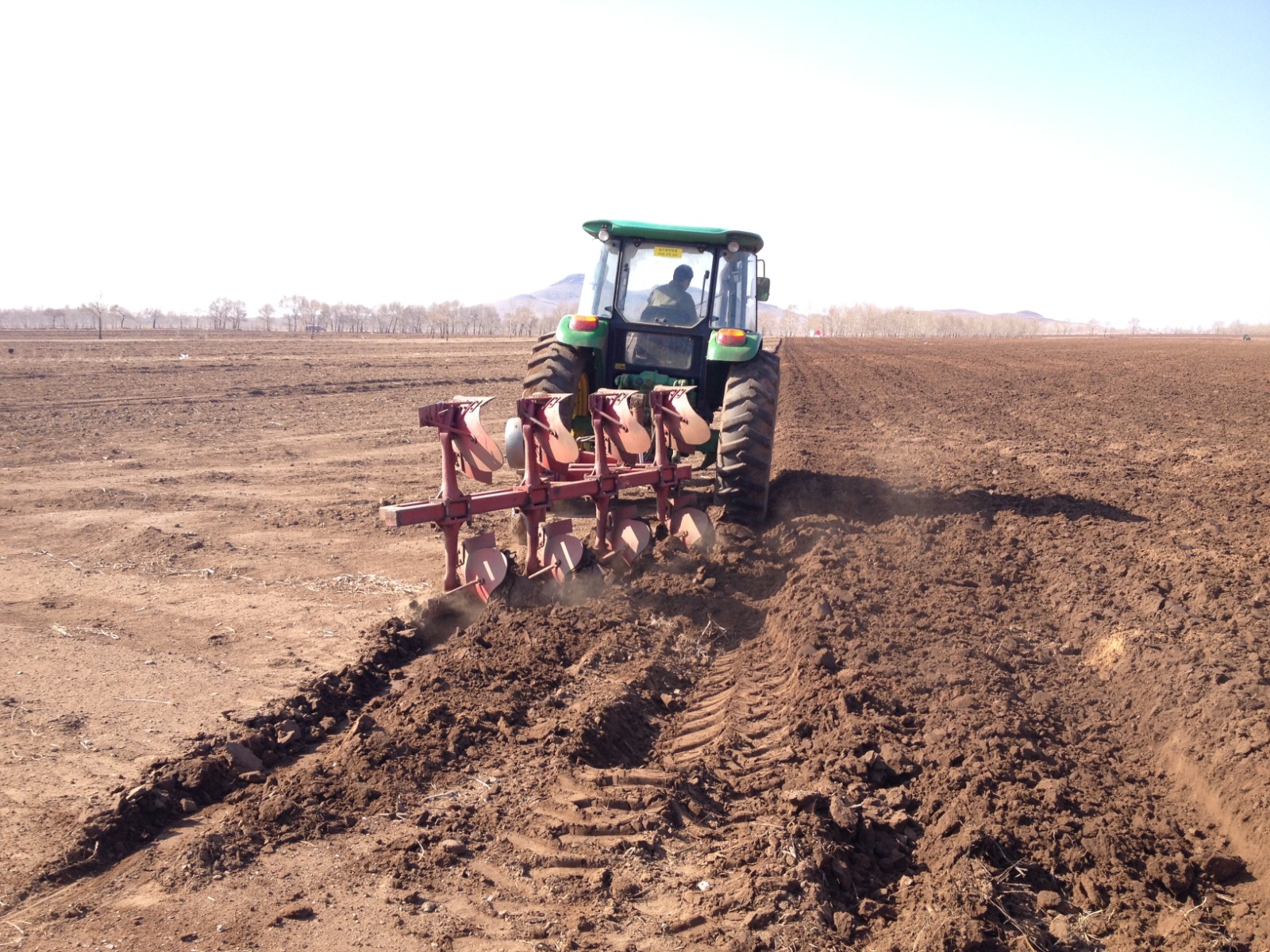 Photo Credit: pxhere
Photo Credit: pxhere
Over time, a plow pan often forms because of the pressure exerted on the soil from heavy equipment. This subsurface layer has a much higher bulk density and lower total porosity, preventing nutrients from moving deeper through the ground.
Do I need to worry about soil stratification?
No, but yes, at the same time. To help clarify that answer, let’s explain a bit more.
Obviously, plenty of research supports that nutrient stratification doesn’t negatively impact plant growth. Especially when the stratification occurs within the root zone or soil moisture is high enough to diffuse immobile nutrients down to the roots. Plants will still take in the nutrients they need.
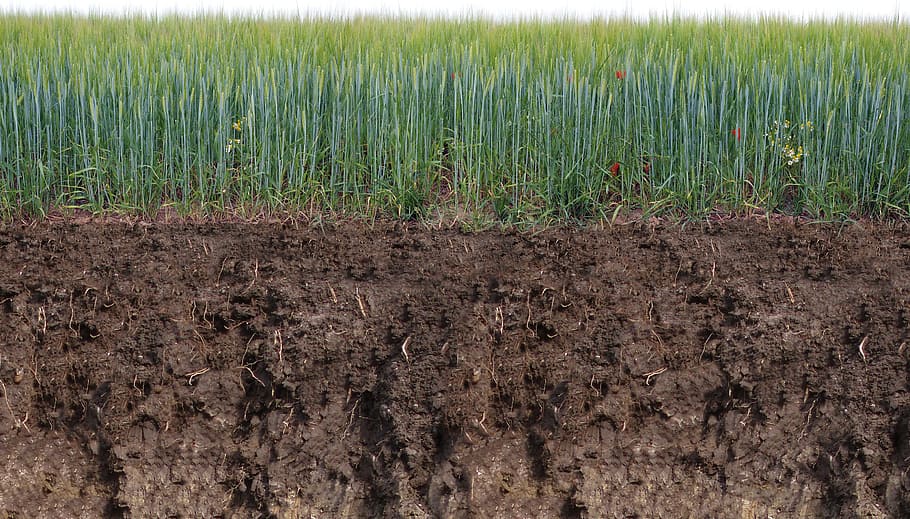 Photo Credit: Wallpaper Flare
Photo Credit: Wallpaper Flare
The “yes” component to that answer is geared towards farmers using cover crops or no-till systems for their crops and hunters growing food plots and implementing the same management practices. Why them and not growers using conventional tillage?
It comes down to fertilizer management. Taking soil samples to a depth of 6” in these situations may give an inaccurate fertilizer recommendation. A nutrient band occurring in the top two inches may be adequate for crop needs. However, when you sample to the standard depth, you dilute this band of phosphorus or potassium, and your analysis may recommend you apply fertilizer.
All this does is add cost and exacerbate the stratification already happening. Plus, you put yourself at a higher risk for environmental issues if those nutrients get carried away in runoff to nearby water sources.
What does this mean for me?
We want you to maintain financial and environmental sustainability and be cautious and mindful of your fertilizer application. The goal for all of us should be to protect our soils and water.
With this in mind, we recommend that the growers implementing no-till or cover crop systems make sure they’re sampling their soils at least every couple of years. Keeping a close eye on these stratification layers and analyzing them separately will ensure you’re applying those essential nutrients at the correct rate.
Deer Creek Seed is here to help
Whether you’re new to food plots or have years of experience, reach out to the Deer Creek Seed experts with your questions. Our certified crop advisors have both professional expertise and personal insight regarding DCS seed products and growing hunting food plots. We offer our customers the highest quality seed and exceptional customer service!
Additional Resources
- Ag Fuse and the University of Nebraska Extension engineer Paul Jasa go more in-depth about research on no-till and nutrient stratification.
- Don’t just take our word for it. Top Crop Manager details research showing that nutrient stratification isn’t the concern we originally thought.



